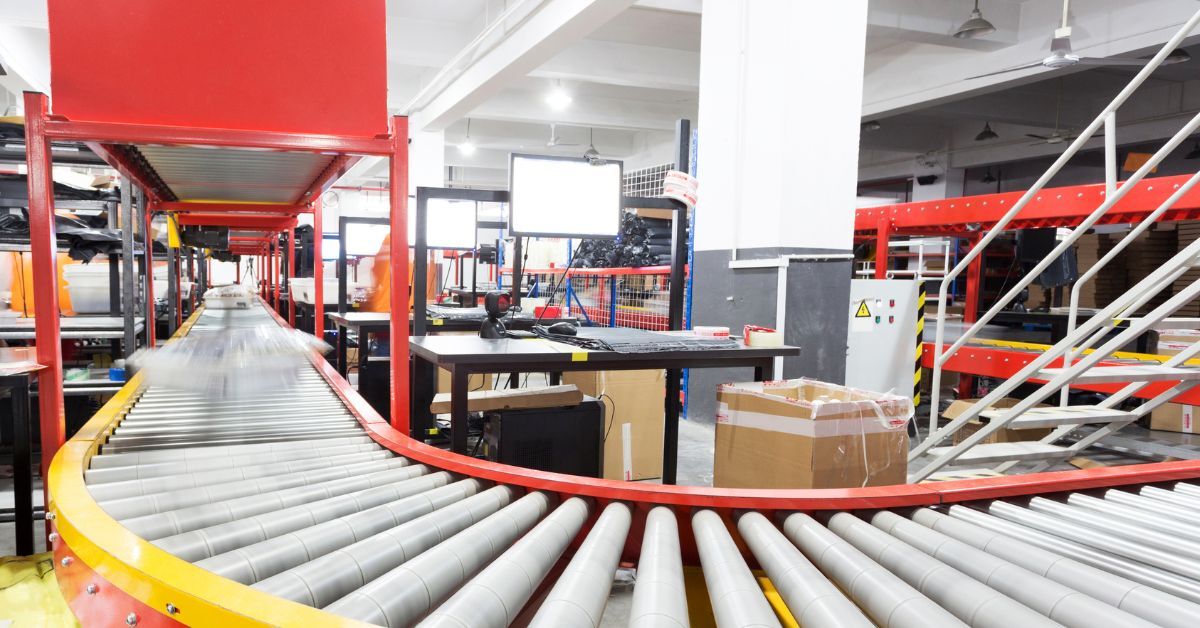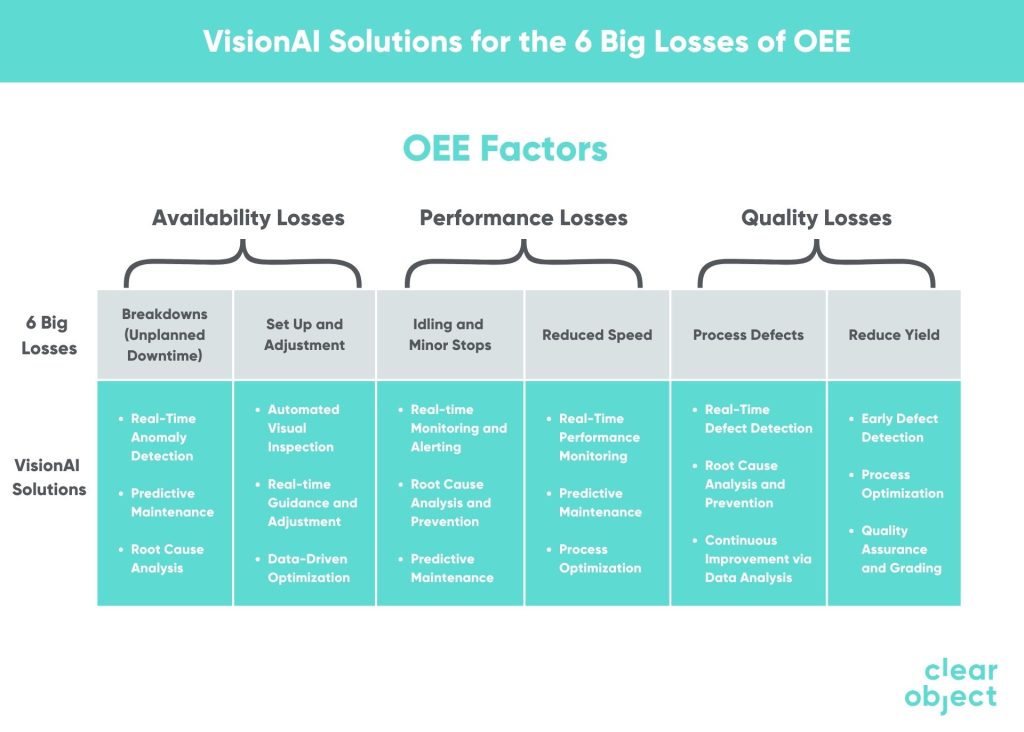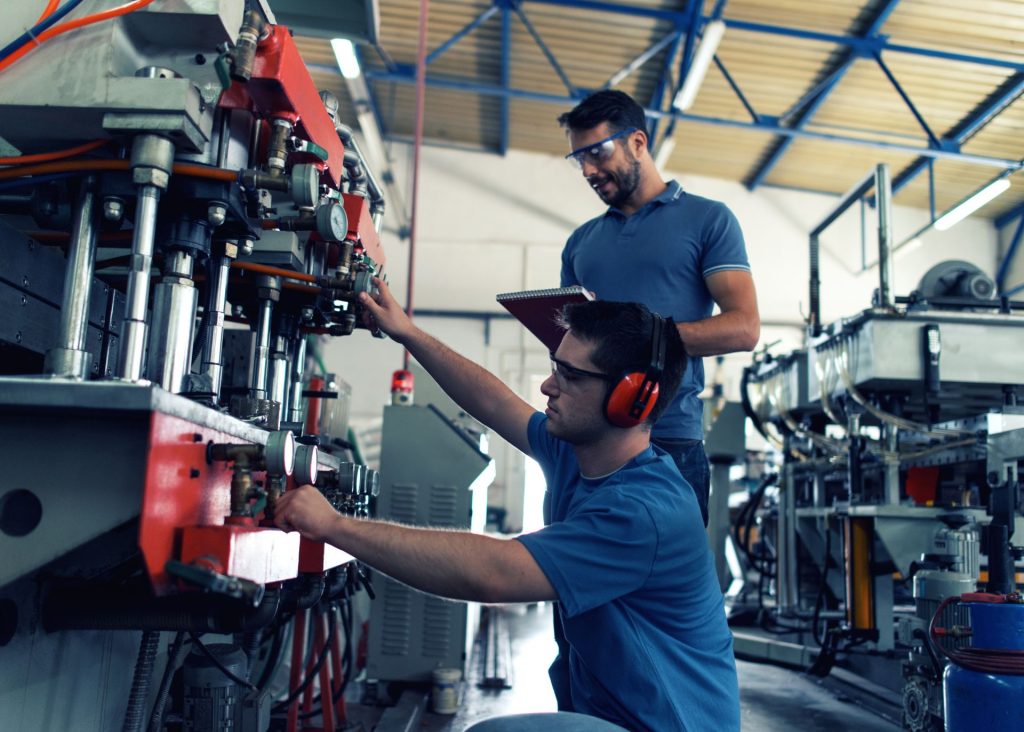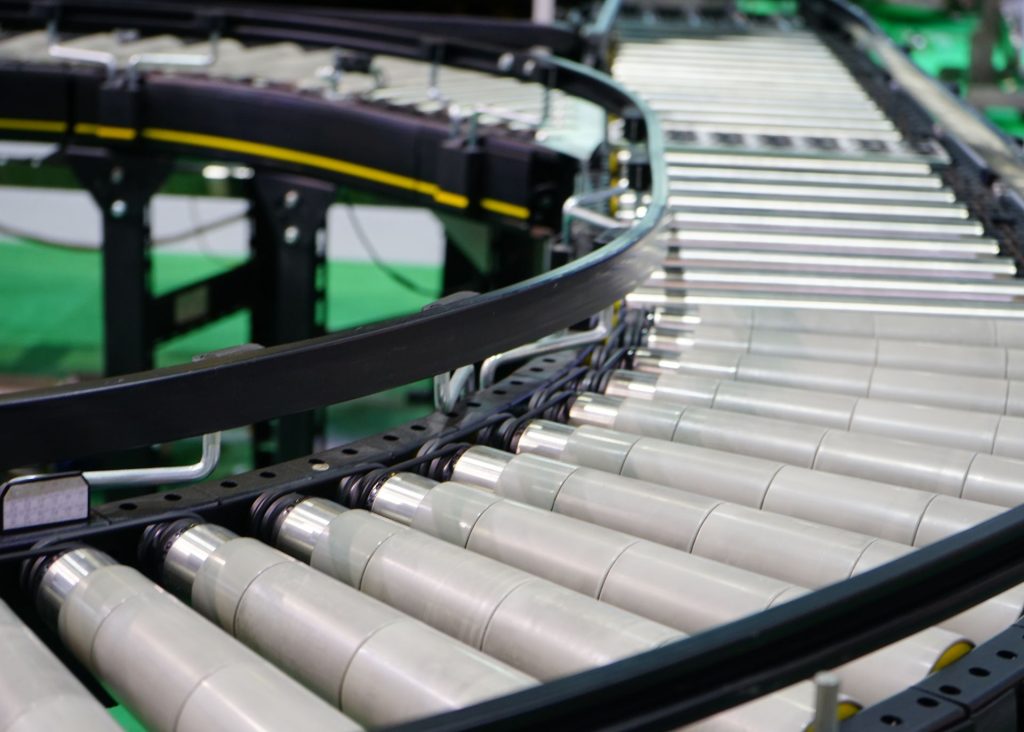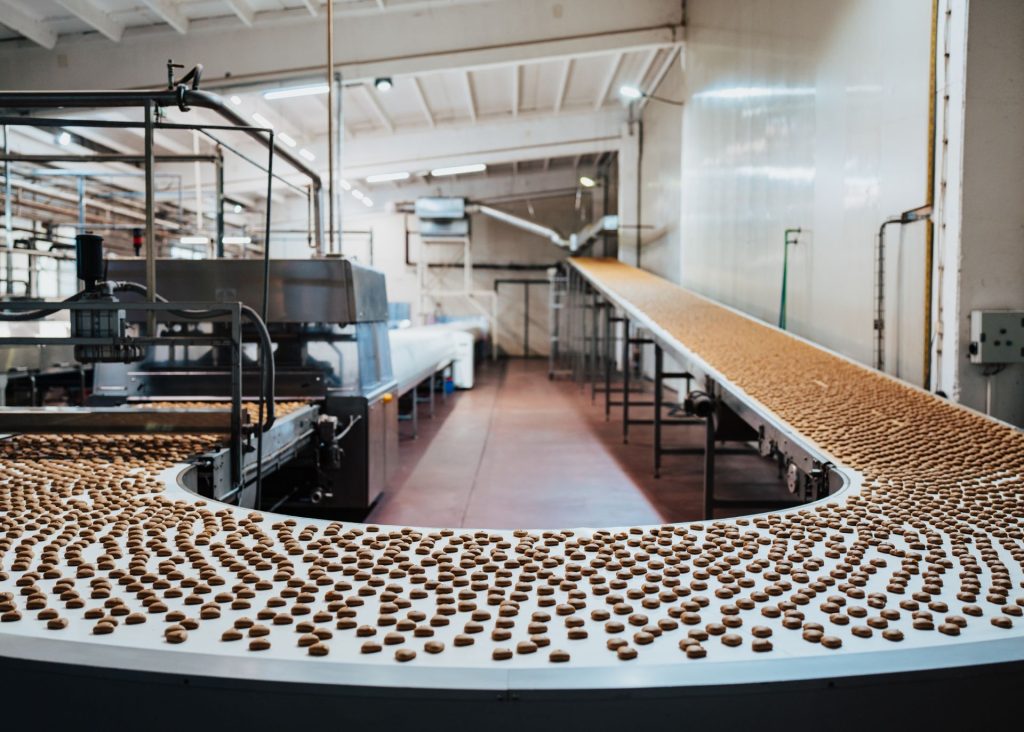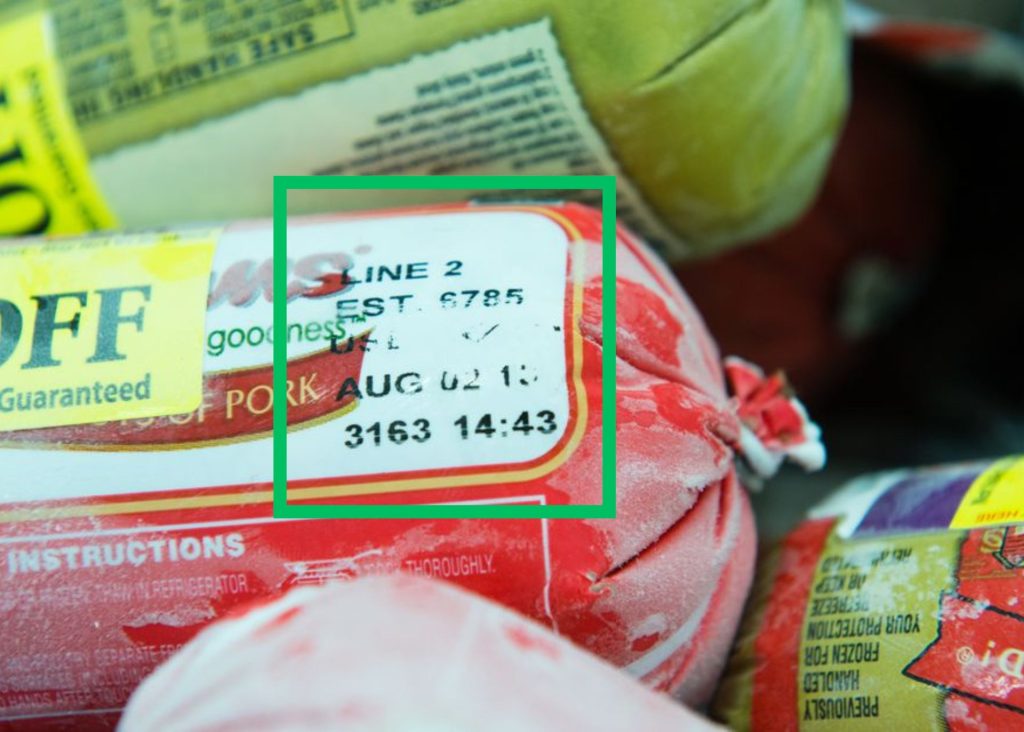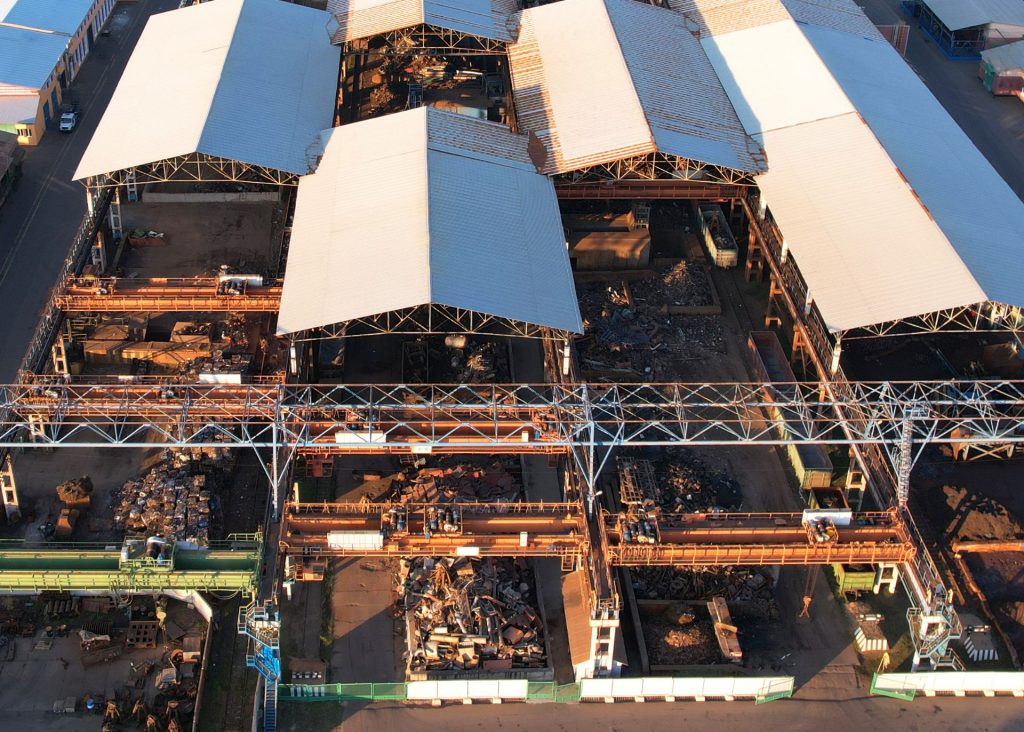Overall Equipment Effectiveness (OEE) is an important metric for manufacturers to track on their journeys to minimizing the six major losses that can hinder productivity:
- Breakdowns
- Setup and adjustments
- Idling and minor stops
- Reduced speed
- Process defects
- Reduced yield
These losses impact operational efficiency and incur significant costs, ranging from unplanned downtime and increased scrap to compromised product quality. The cost to manufacturing operations of work stoppages averages around $125,000 per hour. Addressing these challenges requires proactive strategies, and VisionAI emerges as a transformative technology in this endeavor.
By harnessing machine vision and AI capabilities, VisionAI offers real-time insights and predictive analytics to mitigate these losses. From preemptive maintenance to enhancing setup efficiency and detecting defects early in the production cycle, VisionAI empowers manufacturers to optimize OEE, reduce waste, and elevate overall manufacturing performance.
Overall Equipment Effectiveness is measured by the formula:
Availability X Performance X Quality
The Six Big Losses can each be related to these KPIs. Here’s a breakdown of how VisionAI applications can revolutionize manufacturing operations by tackling these critical efficiency challenges head-on.
Breakdowns (Unplanned Downtime)
The Breakdown loss, often unplanned downtime, poses a significant and costly challenge for manufacturers. It encompasses any unexpected halt in production due to equipment failures or malfunctions, leading to idle machines and halted workflows. Beyond the immediate loss of production output, unplanned downtime disrupts schedules, delays delivery commitments, and incurs additional expenses for urgent repairs and maintenance. Moreover, it can strain workforce efficiency and morale, as operators and maintenance teams must divert their attention from planned tasks to address the issue promptly. In a competitive manufacturing landscape, where every minute of production counts, minimizing unplanned downtime is crucial for maintaining operational continuity, meeting customer demands, and optimizing overall equipment effectiveness (OEE).
How Can VisionAI Help?
VisionAI can monitor equipment health and performance through visual analysis. It can predict potential breakdowns by detecting early signs of wear or malfunction during operation. This proactive maintenance approach minimizes unplanned downtime by allowing timely repairs or preventive measures.
Vision AI Solutions:
-
-
Real-time Anomaly Detection: Vision AI systems can continuously monitor equipment and processes, instantly detecting deviations from normal operating conditions. This early identification allows for proactive maintenance before breakdowns occur, minimizing unplanned downtime.
-
Predictive Maintenance: By analyzing visual data over time, vision AI can identify patterns and trends that indicate potential equipment failures. This enables predictive maintenance scheduling, replacing or repairing components before they break down and disrupt production.
-
Root Cause Analysis: When breakdowns do happen, vision AI can analyze visual records of the event to pinpoint the root cause. This information is crucial for preventing similar issues in the future, improving overall equipment reliability and reducing unplanned downtime.
-
Setup and Adjustments
The setup and adjustment loss represents the time and resources spent preparing machines for production, including tasks like tool changes, calibration, and configuring settings. This process can be time-consuming and prone to inefficiencies, mainly if setups are frequent or complex. Each minute spent on setup delays production start and reduces overall equipment effectiveness (OEE). For manufacturers, inefficient setup practices can lead to increased downtime between production runs, impacting throughput and flexibility in meeting changing customer demands. Moreover, errors or delays in setup can result in quality issues or rework, further escalating costs and compromising product consistency. Addressing setup and adjustment challenges is crucial for optimizing operational efficiency, enhancing agility, and maximizing the utilization of manufacturing assets.
How Can VisionAI Help?
VisionAI can streamline setup processes by recognizing machine configurations and automatically adjusting settings based on production requirements. It can analyze historical data and optimize setup procedures, reducing the time spent on manual adjustments and ensuring machines are ready for production faster.
Vision AI Solutions:
-
-
Automated Visual Inspection: Vision AI systems can rapidly and accurately inspect products and components during the setup process, identifying any deviations from specifications or quality standards. This ensures that faulty or misaligned parts are detected and corrected early, minimizing setup losses.
-
Real-time Guidance and Adjustment: Vision AI can provide real-time visual feedback to operators during machine setup and adjustment processes. This guidance helps operators make precise adjustments, reducing the time and material waste associated with trial-and-error approaches.
-
Data-Driven Optimization: By analyzing visual data collected during setup and adjustment processes, vision AI can identify patterns and trends that lead to losses. This information can be used to optimize procedures, improve operator training, and refine machine settings, ultimately reducing setup and adjustment losses over time.
-
Idling and Minor Stops
The idling and minor stop loss refer to short pauses or delays in production that accumulate over time, disrupting continuous workflow and reducing overall equipment effectiveness (OEE). These interruptions can stem from various factors, such as equipment malfunctions, material shortages, or operator interventions. While minor, these pauses can result in significant downtime and lost productivity. Even brief interruptions can lead to missed production targets, increased cycle times, and reduced throughput efficiency for manufacturers. Addressing idling and minor stops is crucial to maintaining smooth operations, optimizing machine uptime, and maximizing the utilization of resources to meet production goals effectively and efficiently.
How Can VisionAI Help?
By continuously monitoring production lines, VisionAI can identify minor stops or idling periods contributing to downtime. It can distinguish between scheduled breaks and unexpected pauses, providing alerts for immediate intervention. This capability helps maintain continuous production flow and minimize productivity losses.
Vision AI Solutions:
-
-
Real-time Monitoring and Alerting: Vision AI systems can continuously monitor machines and processes, detecting anomalies such as stoppages, slowdowns, or unusual patterns in real-time. This alerts operators or maintenance personnel immediately, enabling swift intervention to minimize idling and minor stop losses.
-
Root Cause Analysis and Prevention: When stoppages occur, vision AI can analyze visual data to identify the root cause, such as misaligned components, material jams, or sensor failures. This information can be used to implement corrective actions and prevent similar stoppages in the future.
-
Predictive Maintenance: By analyzing visual data over time, vision AI can detect early signs of wear and tear or potential malfunctions in machines. This enables predictive maintenance scheduling, addressing issues before they lead to breakdowns or stoppages, ultimately reducing idling and minor stop losses.
-
Reduced Speed
The reduced speed loss in manufacturing refers to operating equipment below its optimal speed capacity, often due to mechanical issues, material constraints, or process inefficiencies. This loss significantly impacts overall equipment effectiveness (OEE) by slowing down production cycles and limiting throughput rates. For manufacturers, operating below optimal speeds increases production time per unit, longer lead times, and reduced output volumes. Moreover, it can lead to higher energy consumption per unit produced, escalating operational costs. Addressing reduced speed challenges is essential for enhancing productivity, meeting production targets efficiently, and maintaining competitiveness in a demanding market environment where speed and efficiency are critical factors.
How Can VisionAI Help?
VisionAI can monitor equipment speeds in real-time and compare them against optimal performance benchmarks. It can detect deviations or slowdowns, pinpointing the root causes such as mechanical issues or material constraints. With this insight, adjustments can be made promptly to ensure machines operate at peak efficiency, thus reducing instances of reduced speed.
Vision AI Solutions:
-
-
Real-time Performance Monitoring: Vision AI can monitor machine speed and product flow in real-time, instantly detecting deviations from optimal operating conditions. This enables immediate adjustments to prevent speed loss from escalating.
-
Predictive Maintenance: By analyzing visual data over time, vision AI can predict potential equipment failures or performance degradation that could lead to reduced speed. Proactive maintenance can be scheduled to address these issues before they impact production speed.
-
Process Optimization: Vision AI can analyze visual data to identify bottlenecks or inefficiencies in production lines contributing to speed loss. This information can be used to optimize workflows, adjust machine settings, and improve overall process efficiency, leading to sustained higher speeds.
-
Process Defects
Process Defects refer to the production of defective parts or products that do not meet quality standards. These defects can arise from various sources, such as material inconsistencies, equipment malfunctions, human errors, or inadequate process controls. Each defective unit represents wasted resources, including materials, labor, and machine time, directly impacting production costs and profitability. Moreover, defects can lead to increased scrap rates, rework efforts, and potential customer dissatisfaction or returns, further adding to operational expenses and damaging reputation. Addressing process defects is critical for manufacturers to uphold product quality, reduce waste, optimize resources, and enhance overall customer satisfaction and competitiveness.
How Can VisionAI Help?
VisionAI can inspect products during manufacturing processes using machine vision and AI algorithms. It can detect defects such as dimensional variations, surface imperfections, or assembly errors that lead to defective products. By identifying and addressing issues early in the production cycle, VisionAI helps minimize scrap and rework, improving overall product quality and reducing defect-related losses.
Vision AI Solutions
-
-
Real-time Defect Detection: Vision AI systems can analyze products and components as they move through the production line, instantly identifying defects such as cracks, misalignments, or inconsistencies in color or texture. This allows for immediate removal of defective items, preventing them from moving further down the line and causing additional waste.
-
Root Cause Analysis and Prevention: When defects are detected, vision AI can analyze visual data to pinpoint the root cause, such as faulty equipment settings, material variations, or environmental factors. This information can be used to address the underlying issue and prevent similar defects from occurring in the future.
-
Continuous Improvement through Data Analysis: Vision AI systems can collect and analyze vast amounts of visual data over time, identifying patterns and trends that lead to defects. This data-driven approach enables manufacturers to continuously improve their processes, optimize equipment settings, and refine quality control measures, ultimately reducing process defect losses.
-
Reduced Yield (Scrap and Waste)
The Reduced Yield (Scrap and Waste) loss in manufacturing refers to the production of excess scrap, rework, or wasted materials beyond what is necessary for achieving desired outputs. This loss arises from process inefficiencies, quality issues, setup errors, and material defects. Each instance of scrap or waste represents direct financial losses due to wasted raw materials, labor, and energy inputs. Additionally, managing and disposing of excess waste incurs additional disposal costs and environmental impacts. For manufacturers, reducing yield loss is crucial for improving resource efficiency, minimizing production costs, and maximizing overall profitability. It also contributes to sustainable manufacturing practices by optimizing material usage and reducing the environmental footprint associated with manufacturing processes.
How Can VisionAI Help?
VisionAI can monitor raw materials and product outputs to identify anomalies or deviations from quality standards. It can analyze production data in real-time to optimize material usage and minimize waste. By ensuring consistency in product specifications and production processes, VisionAI contributes to higher yield rates and reduces unnecessary scrap, thereby improving overall resource efficiency.
VisionAI Solutions:
-
-
Early Defect Detection: Vision AI systems can inspect products and materials in real-time, identifying defects or inconsistencies early in the production process. This allows for immediate intervention to correct the issue or remove defective items before further value is added, reducing scrap and waste.
-
Process Optimization: By analyzing visual data from production lines, vision AI can identify patterns and trends that lead to defects or inefficiencies. This information can be used to optimize processes, adjust machine settings, and improve quality control measures, ultimately reducing scrap and waste.
-
Quality Assurance and Grading: Vision AI can accurately grade products based on visual characteristics such as size, shape, color, and texture. This ensures that products meet quality standards and are appropriately classified, minimizing the risk of mislabeling or rejecting usable products, thus reducing waste.
-
The Role of GenAI with OEE and the 6 Big Losses
Generative AI (GenAI) can also help increase operational efficiency. While Vision AI captures and identifies data from your factory floor, GenAI can offer data-backed recommendations on how to solve any identified process issues.
GenAI and NLP (natural language processing) also make data accessible to people in all roles, not just those fluent in SQL queries. Floor managers can ask, “Why did the line slow to 80% at 4:20pm?” A well-built AI model will understand the question and suggest why the line slowed and things to consider to avoid slows and stoppages in the future.
VisionAI plays a crucial role in enhancing OEE by providing actionable insights, facilitating predictive maintenance, optimizing production processes, and improving product quality—all of which contribute to minimizing the Six Big Losses and maximizing operational efficiency.

